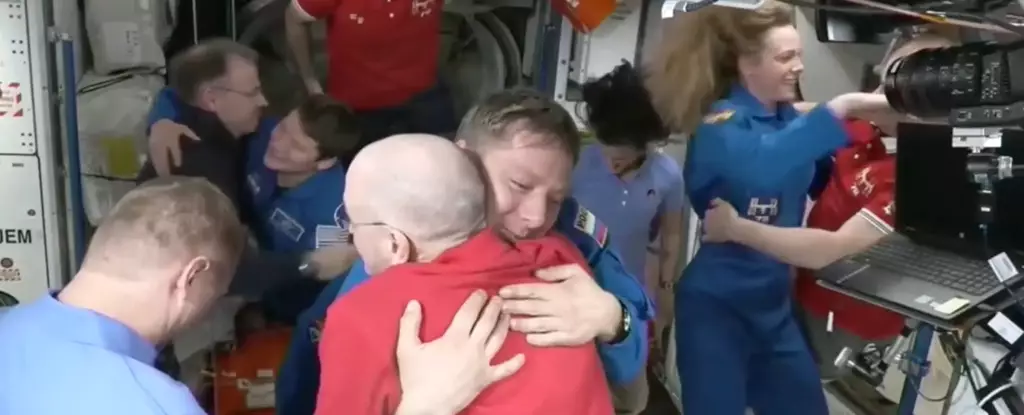In a landmark achievement, SpaceX’s Dragon spacecraft docked seamlessly with the International Space Station (ISS) on Sunday, marking a significant milestone in contemporary space exploration. This mission, dubbed Crew-10, not only enabled the safe return of U.S. astronauts Butch Wilmore and Suni Williams after their unprecedented nine-month stay but also underscored the unyielding human spirit and the tenacity of the space program. Launched from Florida’s Kennedy Space Center, the Crew-10 mission was meticulously orchestrated and realized within just 29 hours, showcasing both SpaceX’s technological prowess and NASA’s continuing commitment to innovation and exploration.
Reunion and Joy Amidst Challenges
As the Dragon spacecraft completed its docking procedure—a feat watched live by audiences worldwide—the scene onboard was overwhelmingly joyous. The reconnection between Crew-10 astronauts Anne McClain, Nichole Ayers, Takuya Onishi, and Kirill Peskov with the Expedition 72 members, particularly Wilmore and Williams, was palpable. The emotional embrace included relief and elation as they marked the successful conclusion of a challenging operation that had far exceeded its original timeframe. The return of these astronauts is not merely a personal victory; it represents the resilience of humanity in navigating the complexities of space travel.
The Unexpected Journey
Wilmore and Williams’ extended stay on the ISS, initially intended for a brief eight-day mission, raised eyebrows and concerns. After experiencing mechanical setbacks aboard Boeing’s Starliner, which underwent critical helium leaks and thruster complications en route to the ISS, NASA chose a cautious approach by bringing back the spacecraft uncrewed. In these trying times, both astronauts engaged in vital station research, troubleshooting, maintenance tasks, and aiding in the analysis of the Starliner’s performance, thus turning a potential setback into a unique opportunity for scientific inquiry. This experience demonstrates how challenges in space may lead to both personal growth and contributions to the greater body of knowledge in aerospace endeavors.
Preparations for Future Exploration
The arrival of the Crew-10 team is not just about immediate rescue and emotional reunions. It signifies a step forward for NASA’s future space missions as the newly arrived astronauts will undertake significant scientific research and experiments over the next six months. These efforts are crucial for planning future manned missions to distant destinations, including Mars. The Crew-10 astronauts’ work could lay important groundwork, transforming our understanding of long-duration space flight, human adaptation, and technological prowess.
As the U.S. considers more ambitious goals in outer space, the successful docking of the Dragon spacecraft serves as a powerful reminder of why we explore: to push the limits of human potential, foster collaboration, and prepare for an ever-expanding frontier beyond our planet. The implications of this mission extend far beyond personal victories but could shape the future narrative of humanity’s journey into the cosmos.


Leave a Reply